

 |
 |
Methley |
* Other branches of this family have possessed patents of nobility : viz. the Saviles, Dukes of Sussex, which title became extinct in 1672, and the Saviles, Marquisses of Halifax, until 1700.
| Temp. Instit. | Rectores Eccle. | Patroni. | Vacat. |
| 8 Kal. Apr. 1281 | Dns. Will. de Radeclyffe, Pbr. | Dna.Alica de Lascy | p'mort. |
| 4 Id. Oct. 1309 | Dns. Tho. de Doncaster, Pbr. | eadem. | |
| 2 Kal. Jan. 1338 | Dns. Robt. de Lynworth, Cl. | Dna.Philipa Regina | |
| 27 Mar. 1358 | Dns. Robt. de Walton, Cap. | Dns. Henr. Dux. Lanc. | p'resig. |
| 3 Junij, 1367 | Dns. Joh. de Ledes, Pbr. | Dna. Blanchia Ducsa Lanc. (Iohe Duce in remotis agente) | p'mort. |
| 12 Junij, 1379 | Dns. Will. de Hayton, Pbr. | Dns. Johe's Rex Castel,& Dux Lanc. | p'resig. |
| 6 Febr. 1396 | Dns. Nic. Daubeny, Cap. | idem | p'resig. |
| 5 Aug. 1400 | Mr. Will. Turbacke, Subd. | H. 4. Rex ut Dua Lanc. | |
| 26 Decbr. 1407 | Dns. John CoIne, (f. Nici Colne, Cl.) | idem Rex. | |
| 1421 | Mr. Robt. Hemyng | H. 5. | p'resig. |
| 22 Junii, 1451 | Mr. Will. Lytster | H. 6. Rex ut Dux Lanc. | p'mort. |
| 17 Novbr. 1452 | Mr. Tho. Pash, Pbr. | idem Rex. | p'resig. |
| 15 Julij, 1459 | Mr. Joh. Lancaster, L.B. Pbr. | idem Rex. | p'resig. |
| 4 Junii, 1485 | Dus. Thu. Brownies, Cap. | Assignatus Rex 3. Regis. Sub. sigill. duc. | p'mort. |
| 28 Jan. 1497 | Mr. Tho. Medofeld. M.A. | H. 7. Rex ut Dux Lanc. | p'resig. |
| 10 Novbr. 1501 | Mr. Edw. Basset, Pbr. | idem Rex. | p'mort. |
| 10 Aug. 1552 | Dns. Anth. Askham, Cl. in Med. Dr. | Assignati H. 8. Regis ut Duels Lanc. | p'resig. |
| 11 Julii, 1567 | Dns. Otho Hunt, Cl. M.A. | Dua. Eliz. Regina | p'mort. |
| 5 Julij, 1591 | Tym. Bryght, Cl. Med. Dr. | eadem. | p'mort. |
| 28 Oct. 1615 | Tho. Home, Cl. | Anno Reg. Jac. I. | p'resig. |
| 25 Junii, 1618 | Hugo Ramsden, Cl. M.A. | Anno Reg. Jac. I. | p'cession. |
| 22 Nov. 1628 | Dan. Ambrose, Cl. S.T.B. | C.I.Rexut Dux Lanc | |
| Anth. Elcocke Cl. | p'mort. | ||
| 1 Novbr. 1676 | Toby Conyers, Cl. M.A. | C. 2. Rex. | p'mort. |
| 6 Oct. 1687 | Gilbt. Alkynson, Cl. M.A. | Jac. 2nd Rex. | |
| 1709 | Geo. Goodwin, AM.. | Anna Regina. | p'mort. |
| 1750-51 | Joh. Scott, A.M., Col. Trin. Cant. Soc. | Geo. 2. | p'mort. |
| 1780 | Joh. Briggs, A.M., Cestriae Canonicus Cancellarius, Coll. Trin. Cant. Ob. Soc. | Geo. 3. | p'mort. |
| 1804 | Hon. A. H. Cathcart, AM., Preb. Langtoft Ec. Ebor. Vic. Rasemtone, Com. Bucks, Ball. Coll. Ox. | Geo. 3. |
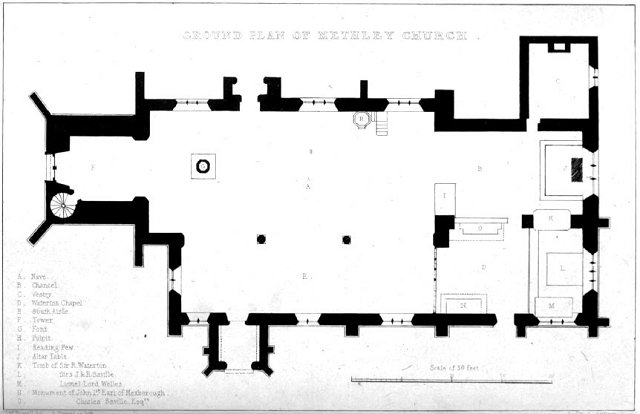
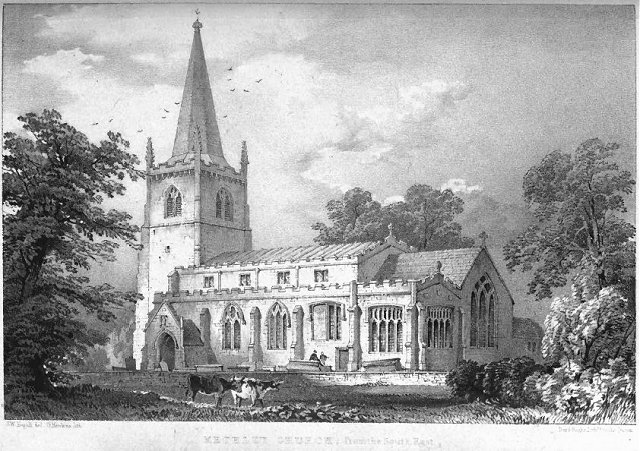
*Perhaps an exception may be allowed on account of some local or peculiar circumstance, as, for instance, the saint to whom a church is dedicated. Thus, a church dedicated to St. Sebastian might have an arrow for a vane, or one to St. Michael or St. George, a dragon.
† The Decorated Style of Gothic Architecture prevailed from about twenty years before to nearly the close of the fourteenth century. The author of the " Glossary of Architecture," observes, "it was first introduced in the reign of Edward I., some of the earliest examples being the celebrated crosses erected to the memory of Queen Eleanor, who died in 1290; but it was chiefly in the reign of his successors, Edward IL and III., that this style was in general use : and as considerable changes were made almost immediately after the death of Edward III., it has been not inappropriately called the Edwardian style."
 The Chancel retains externally the original high pitched roof, and the gable is surmounted by a cross.
The Chancel retains externally the original high pitched roof, and the gable is surmounted by a cross.
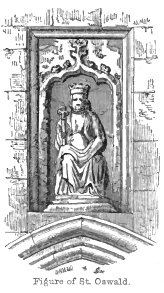 (As in the West Door, York Minster.) The dripstones of this style are not, as in the earlier and later styles, returned horizontally, or carried round buttresses, but are terminated by corbel heads. (As in the Choir Aisle of York Minster.) The buttresses are worked in stages, (as in the Nave of Gloucester Cathedral,) and each stage finished with a triangular head, crocketed and finialed. (As in the Nave of Beverley Minster.) The face of each stage is also enriched with a niche or niches, worked in the same ornamental manner. (As in the West Front of York Minster.) The parapets are often plain embattled, (as in the Nave, North side, York Minster,) but sometimes open or pierced, and filled with a richly foliated nebule moulding. (As in the Magdalen Church, Oxford.) To the open-work bands of the former, or Early English style, succeeds the flowered moulding; and to the toothed ornament, succeeds a flower of four leaves in a deep moulding, with considerable intervals between. The peculiar ornament called a flower-ball is also much used in the mouldings of this style. There is a prevalence of pyramidal rather than vertical or horizontal lines; consequently we find an abundance of richly crocketed and finialed canopies.
(As in the West Door, York Minster.) The dripstones of this style are not, as in the earlier and later styles, returned horizontally, or carried round buttresses, but are terminated by corbel heads. (As in the Choir Aisle of York Minster.) The buttresses are worked in stages, (as in the Nave of Gloucester Cathedral,) and each stage finished with a triangular head, crocketed and finialed. (As in the Nave of Beverley Minster.) The face of each stage is also enriched with a niche or niches, worked in the same ornamental manner. (As in the West Front of York Minster.) The parapets are often plain embattled, (as in the Nave, North side, York Minster,) but sometimes open or pierced, and filled with a richly foliated nebule moulding. (As in the Magdalen Church, Oxford.) To the open-work bands of the former, or Early English style, succeeds the flowered moulding; and to the toothed ornament, succeeds a flower of four leaves in a deep moulding, with considerable intervals between. The peculiar ornament called a flower-ball is also much used in the mouldings of this style. There is a prevalence of pyramidal rather than vertical or horizontal lines; consequently we find an abundance of richly crocketed and finialed canopies.
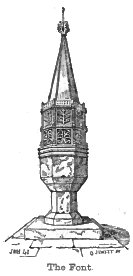 Entering through the Tower, the first object which demands attention is (as it ought to be) the full-sized, deep, stone, octangular Font, on a pedestal and one step, and lined with lead, but without any remarkable character. It is surmounted by a canopy of heavy tabernacle work, which, with the Font itself, is painted stone colour.*
Entering through the Tower, the first object which demands attention is (as it ought to be) the full-sized, deep, stone, octangular Font, on a pedestal and one step, and lined with lead, but without any remarkable character. It is surmounted by a canopy of heavy tabernacle work, which, with the Font itself, is painted stone colour.*
* It is astonishing how often painting is applied so injudiciously, that it would be impossible that the material imitated should be really employed. Thus in the above example the canopy not only is not but could not be of stone. Sometimes one sees a roof so painted that if the construction were really such as it is intended to appear, it must fall on the beads of the people below. This is of course an extreme case, and more uncomfortable in its effects than most others, but it is one that really occurs, and well exemplifies this particular kind of bungling.
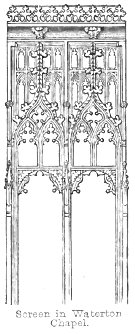 In the name of God, Amen. I, Robert Waterton, senior, bequeath my soul to God, &c., and my body to be buried in the parish church of Methley : And to the fabric of the said church of Methley, and for the erection of a new chapel on the South side of the said church, of the length of the chancel, I bequeath two hundred pounds.
In the name of God, Amen. I, Robert Waterton, senior, bequeath my soul to God, &c., and my body to be buried in the parish church of Methley : And to the fabric of the said church of Methley, and for the erection of a new chapel on the South side of the said church, of the length of the chancel, I bequeath two hundred pounds.
* The back of this screen is inscribed thus :- Johnes Waterton. Willa Skargill Thomas Wombwell. And between the several Christian and surnames are the following moats. Barry of six, ermine and gules, three crescents sable; over all a bend argent, for Waterton : Ermine, a saltier gules, for Skargill : and gules, between six unicorns heads argent, a bend of the second, for Wombwell.
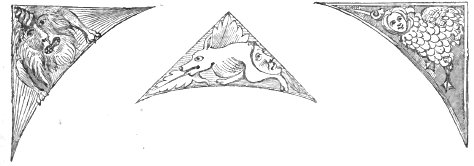
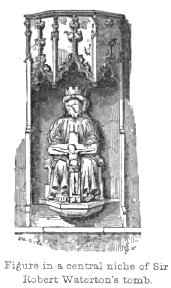 " On a highly elevated altar tomb, are the cumbent figures of a knight and his lady, their hands elevated as in prayer, his head reposing on an helmet, crested with a plume of feathers : his feet on a lion : a large embroidered wreath surrounds his head, a collar of SS. is on his breast, and a rich belt, adorned with jewels begirds his waist. The lady's head rests on two cushions, supported by angels. Her hair is collected in a net, and very rich head-dress. A collar of SS. or other ornament resembling it, is also on her neck. Her feet rest on two lapdogs, with bells.
Both have a profusion of rings, represented as they were really worn at that time, very massy. He has one on the upper joint of the long and middle finger of the right hand, and another on the long finger of the left. She has one on the upper joint of the middle and little finger of the right hand, and on the middle finger of the left. On each side of the tomb are five niches, with arches and finials. In the central niche to the south is a figure apparently meant for God the Father, with a crucifix in his lap.* Westward from this are the Arms of Waterton, barry of six, gules and ermine, three crescents sable. Eastward the same empaling Fleming, each supported by an angel kneeling. On the North side the central coat is gone.† Eastward Waterton empaling Fleming as before. Westward Waterton single, both supported like the others by angels kneeling, in the niche more westward still, an old man kneeling and holding a book and sword. The figures in the other niches are gone."
" On a highly elevated altar tomb, are the cumbent figures of a knight and his lady, their hands elevated as in prayer, his head reposing on an helmet, crested with a plume of feathers : his feet on a lion : a large embroidered wreath surrounds his head, a collar of SS. is on his breast, and a rich belt, adorned with jewels begirds his waist. The lady's head rests on two cushions, supported by angels. Her hair is collected in a net, and very rich head-dress. A collar of SS. or other ornament resembling it, is also on her neck. Her feet rest on two lapdogs, with bells.
Both have a profusion of rings, represented as they were really worn at that time, very massy. He has one on the upper joint of the long and middle finger of the right hand, and another on the long finger of the left. She has one on the upper joint of the middle and little finger of the right hand, and on the middle finger of the left. On each side of the tomb are five niches, with arches and finials. In the central niche to the south is a figure apparently meant for God the Father, with a crucifix in his lap.* Westward from this are the Arms of Waterton, barry of six, gules and ermine, three crescents sable. Eastward the same empaling Fleming, each supported by an angel kneeling. On the North side the central coat is gone.† Eastward Waterton empaling Fleming as before. Westward Waterton single, both supported like the others by angels kneeling, in the niche more westward still, an old man kneeling and holding a book and sword. The figures in the other niches are gone."
* There can be no doubt that this is the meaning of the figure. This was the usual way of representing the Father supporting the Lord Jesus on the cross.
† Or more probably this, like the central compartment on the south side, contained some religious emblem.
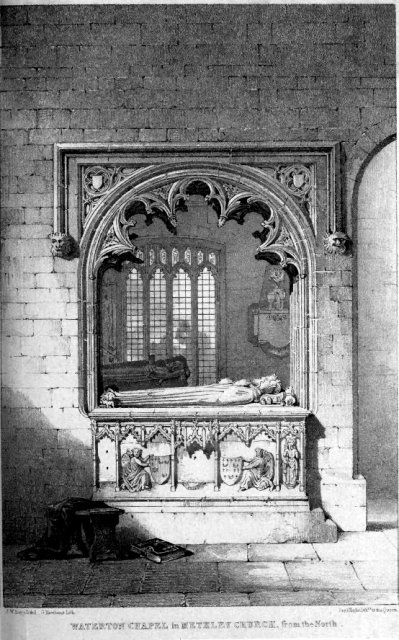 Opposite to the tomb of Sir Robert Waterton, and beneath one of the South windows, is the tomb of Lionel Lord Welles, and Cecily his Wife, who was daughter, and after the death of her brother Sir Robert Waterton, junior, the sole heir of the founder of the Chapel. This monument is of the same general character with the former, but of fairer workmanship, as was to be expected from its later date, for Lord Welles fell at the field of Towton,* where a bloody victory was gained over the house of Lancaster, in 1461. This tomb is appropriated to Lord Welles and his wife, on the evidence of the armorial bearings, on the tabard of the cumbent knight, and on the six shields, supported by as many angels, on the side of the tomb. The tabard is painted, or, a lion rampant, queue furche sable, the paternal coat for Welles, which appears empaled with Waterton (which last coat also occurs alone) on the other escutcheons before mentioned. This whole monument, though of alabaster, was adorned with gilding and colours, which have of course nearly disappeared.
Opposite to the tomb of Sir Robert Waterton, and beneath one of the South windows, is the tomb of Lionel Lord Welles, and Cecily his Wife, who was daughter, and after the death of her brother Sir Robert Waterton, junior, the sole heir of the founder of the Chapel. This monument is of the same general character with the former, but of fairer workmanship, as was to be expected from its later date, for Lord Welles fell at the field of Towton,* where a bloody victory was gained over the house of Lancaster, in 1461. This tomb is appropriated to Lord Welles and his wife, on the evidence of the armorial bearings, on the tabard of the cumbent knight, and on the six shields, supported by as many angels, on the side of the tomb. The tabard is painted, or, a lion rampant, queue furche sable, the paternal coat for Welles, which appears empaled with Waterton (which last coat also occurs alone) on the other escutcheons before mentioned. This whole monument, though of alabaster, was adorned with gilding and colours, which have of course nearly disappeared.
* To this bloody field Drayton thus alludes in his Polyolbion:-
" Small Cock a sullen brook, coumes to her succour then,
Whose banks received the blood of many thousand men
On sad Palm Sunday slain, that Towton Field we call,
Whose channel gaite was choked with those that there did fall;
The Wharf discoloured was with blood that there was shed,
The bloodiest field betwixt the White Rose and Red."
* A funereal urn however appears behind him, a curious memorial of the heathen custom of burning bodies, displaced among Christians by the rite of burial consecrated by the grave of our blessed Lord.
 In the Belfry are deposited two ancient monuments, far anterior to any of those now described. They are evidently there only to be out of the way, and have been obliged to exchange their recumbent for an erect position. They are mentioned here, because if they were restored to the Church, and to their proper position, they would afford, together with the various examples already described,* an admirable series of monuments, descending from a remote period to the present day, and well exemplifying the gradual progress from the low recumbent figure, to the canopied and decorated altar tombs of the fifteenth century, with the decline of Christian taste in sepulchral devices during the reign of Charles the First, to the close of the last century. They might, perhaps, most conveniently be placed in the Waterton Chapel, but not so appropriately as in the Chancel, or the South Aisle immediately adjoining; because they would interfere with the historical series which the Chapel presents ; and because they are, in fact, much older than that structure.
In the Belfry are deposited two ancient monuments, far anterior to any of those now described. They are evidently there only to be out of the way, and have been obliged to exchange their recumbent for an erect position. They are mentioned here, because if they were restored to the Church, and to their proper position, they would afford, together with the various examples already described,* an admirable series of monuments, descending from a remote period to the present day, and well exemplifying the gradual progress from the low recumbent figure, to the canopied and decorated altar tombs of the fifteenth century, with the decline of Christian taste in sepulchral devices during the reign of Charles the First, to the close of the last century. They might, perhaps, most conveniently be placed in the Waterton Chapel, but not so appropriately as in the Chancel, or the South Aisle immediately adjoining; because they would interfere with the historical series which the Chapel presents ; and because they are, in fact, much older than that structure.
* A brass in the Chancel, commemorating a Rector of the Church, and dated 1421, may be mentioned as an example of another style of monumental device, though in nothing else remarkable.